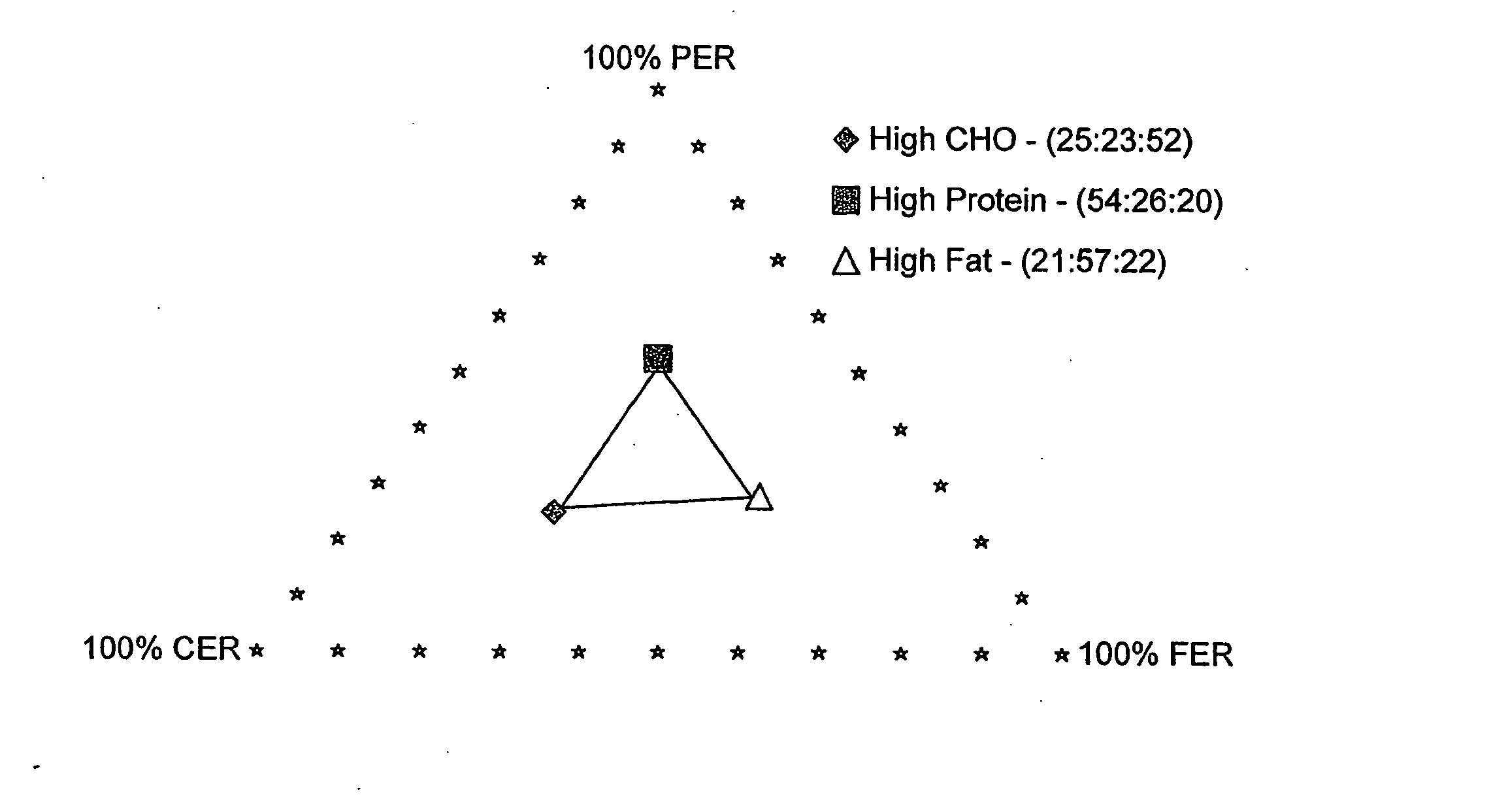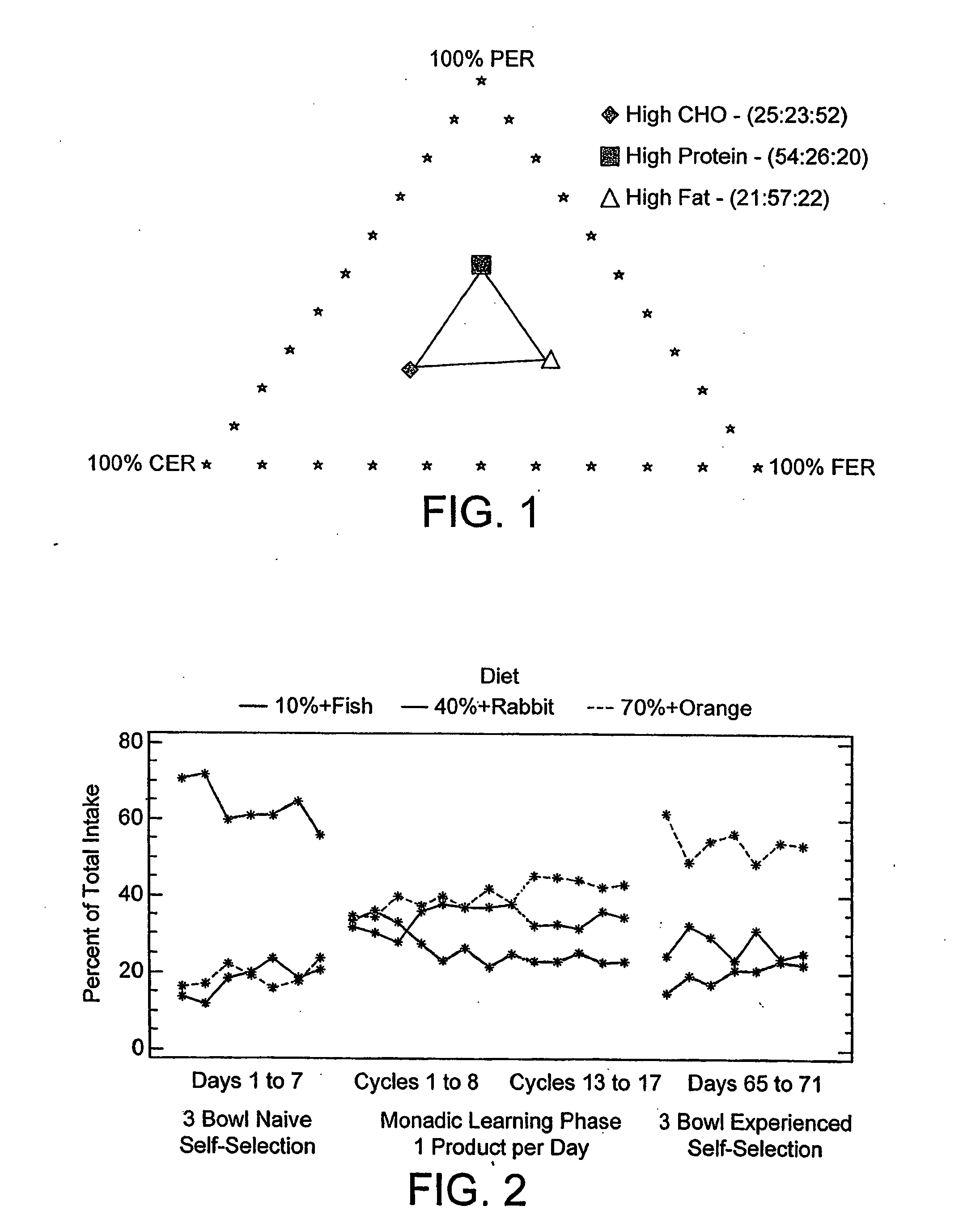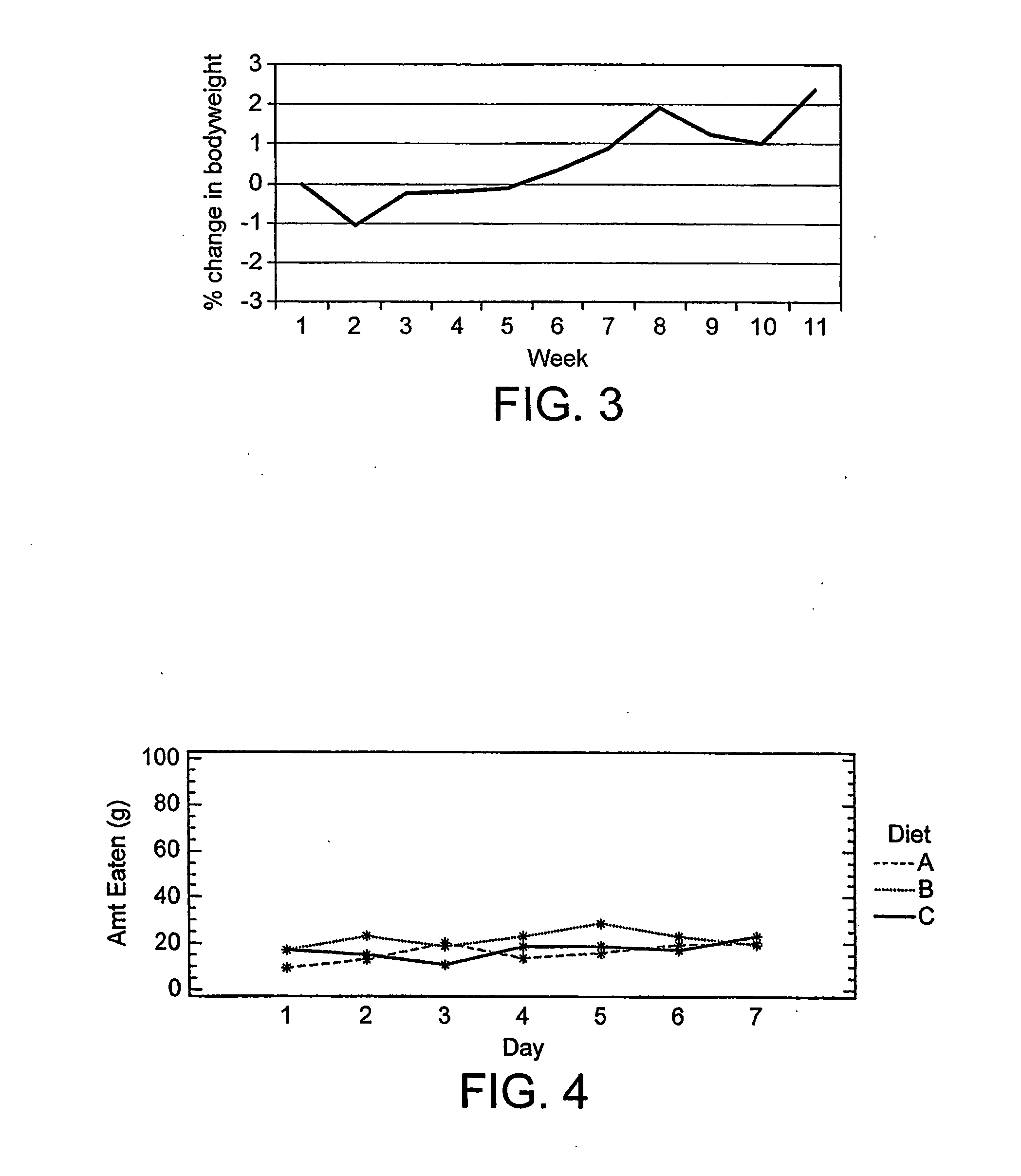Animal multi-component meal
a multi-component, food technology, applied in the field of animals multi-component foodstuffs, can solve the problems of short and long-term effects of sacrificing the macronutrient content of an animal's diet that are not beneficial, and achieve the effects of increasing enjoyment/satisfaction, increasing acceptance/increasing the amount of feeding, and increasing eating enjoymen
- Summary
- Abstract
- Description
- Claims
- Application Information
AI Technical Summary
Benefits of technology
Problems solved by technology
Method used
Image
Examples
example 1
Study to Assess the Effect of Dietary Macronutrient Profile on Food Selection in Cats
Summary
[0090] Adult cats were fed homogenised diets composed of soy isolate, chicken breast, lard and either carob solution or water. The diets were isocaloric and consisted of a range of ratios of protein to fat energy (P-F:ER), these being 10% PER / 90% FER (a PER thought to be close to the cat's minimum protein requirement), 40% PER / 60% FER (a PER typical for a canned product) and 70% PER / 30% FER. Three flavours of different relative preference were included with the diets, such that each of the 3 groups of cats received different flavour-diet combinations.
[0091] During the initial 7 days of self-selection / 3-way preference, the naive cats (with no prior experience of the diets and flavours) appeared to make their diet selection based on the hedonic cues associated with the diets. They selected the diet associated with the preferred flavour, irrespective of the amount of soy isolate and lard.
[...
example 2
Effect of Macronutrient Profile on the Long-Term Acceptance of Food
Summary
[0190] This trial aimed to establish whether the naïve response to the hedonic properties of three diets (carbohydrate enriched, protein enriched and fat enriched) could be modified by a monadic learning phase.
[0191] 12 adult cats were fed 3 diets during this study following the feeding protocol: 7-days of self-selection / 3-way preference followed by 24-days of monadic learning (one product per day) and finally 7 days of self-selection / 3 way preference. Cats had approximately 22 hours access to food every day during the trial.
[0192] 10 out of the 12 cats completed the study; 2 cats were removed from the study due to inadequate food intakes. The mean percentage change in body weight during the trial for the cats that completed the study was +2.39%
[0193] The naive response of the cats to the 3 diets was that the protein enriched diet had the highest mean intake (22 g) whilst the carbohydrate and fat enrich...
example 3
Effect of Macronutrient Profile on the Long-Term Acceptance of Food:
Effect of Varying Protein and Fat Energy Ratios
Summary
[0242] 12 adult cats were fed 3 diets (one high in protein, one high in fat and one intermediate) during this study following the feeding protocol: 7-days of self-selection / 3-way preference followed by 24-days of monadic learning (one product per day) and finally 7 days of self-selection / 3 way preference. Cats had approximately 22 hours access to food every day during the trial.
[0243] All 12 cats completed the study. The mean percentage change in bodyweight during the trial for the cats was +2.2%
[0244] The naïve response of the cats to the 3 diets was that the high protein and intermediate diets were preferred (mean intakes 19 g and 22 g respectively) over the high fat diet (mean intake 11 g)
[0245] The experienced response of the cats to the 3 diets was similar to that seen during the naïve self-selection in that the high protein and intermediate diets we...
PUM
 Login to View More
Login to View More Abstract
Description
Claims
Application Information
 Login to View More
Login to View More - R&D
- Intellectual Property
- Life Sciences
- Materials
- Tech Scout
- Unparalleled Data Quality
- Higher Quality Content
- 60% Fewer Hallucinations
Browse by: Latest US Patents, China's latest patents, Technical Efficacy Thesaurus, Application Domain, Technology Topic, Popular Technical Reports.
© 2025 PatSnap. All rights reserved.Legal|Privacy policy|Modern Slavery Act Transparency Statement|Sitemap|About US| Contact US: help@patsnap.com



